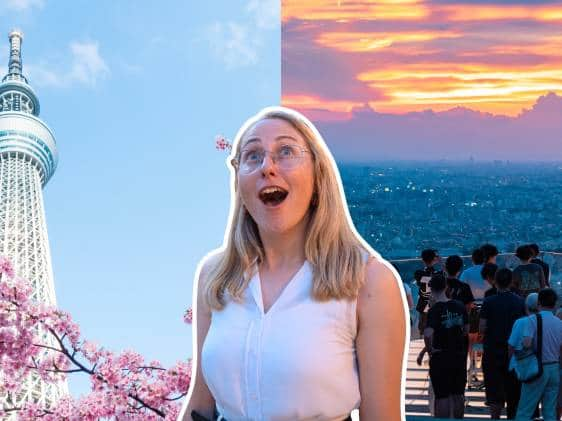You don’t have to go all the way to Wakayama Prefecture’s Mt. Kōya or Kumano Kodō to make a pilgrimage to a sacred site. Abundant in natural beauty and holiness (at least, according to Shintō tradition), the city of Isehara in Kanagawa Prefecture is a hidden gem of a place, and the best news is that it’s only about 2 hours away from Tokyo! It’s home to the 1252-meter Mt. Ōyama, known as one of Kanagawa’s 50 most scenic sites. If you want to visit a lesser-known but beautiful place filled with peace and quiet, at the same time not breaking the bank, perhaps it’s time for a getaway to Isehara.
Getting There
From Shinjuku, take the Odakyu Odawara Line’s rapid express train to Isehara, which takes a little over 60 minutes and costs only ¥600 one-way. From there, your next destination is Mt. Ōyama, because that’s where all the scenic action is. Head for bus terminal 4 close to the North Exit, and board a Kanagawa Chuo Kotsu Bus (¥320 one-way) for a 30-minute ride to Ōyama Cable Bus Stop, the last stop.

Once you arrive at Ōyama Cable Bus Stop, you can take a 15-minute walk, passing through a street lined with shops and restaurants, to the Ōyama Cable Car Station, or you can hike to the top of the mountain. Costing ¥450 one-way, the cable car service begins at 9 am and departs every 20 minutes. Hikers can choose between the otokozaka (男坂 literally “men’s hill”) or onnazaka (女坂 “women’s hill”) — yes, we know. The “men’s hill” is steeper, while the “women’s hill” has more interesting sights along the way, such as Jizo (a guardian deity) statues and “7 Wonders” spots that are said to be magical. Don’t let the names of the trails influence you — choose whichever suits your fitness level and interests!
Sights and Activities
Surrounding Mt. Ōyama are several hiking trails for both experienced and inexperienced hikers. Many prefer to enjoy their Isehara trip by taking the cable car halfway to the top, then hiking the rest of the way. Along the way, hikers can see a cedar grove, the Nijū waterfall, as well as seasonal colors such as picturesque cherry blossoms, summer flowers, and vivid maple leaves. A full hiking course can take about 4-5 hours.

At the peak is Ōyama Afuri Shrine, which was built more than 2000 years ago, enshrines Ōyamatsumi no Kami, father of the deity found at the shrine on Mt. Fuji’s summit. On a clear day, you can enjoy splendid views of Mt. Fuji, Enoshima Island, Tokyo (including Tokyo Tower and the Tokyo Skytree), and part of the Izu peninsula. Ōyama Afuri Shrine’s sub-shrine, Afuri Jinja Shimosha, is 700 meters below, and its water is said to bring good luck and long life to its drinkers.

Other smaller shrines can be found around Mt. Ōyama, such as Hinata-Yakushi Temple, with its important cultural and natural treasures: principal images of Buddha and 800-year-old cedar trees.
In summer, specifically August, Mt. Ōyama also holds a number of events: osamedachi (a sword-offering rite), a paper lantern festival, and, for something more modern, the Ōyama Summer Jazz Latin Friendship Concert. The Ōyama Himatsuri Takigi Noh, an event to enjoy traditional Noh plays, is held in early October.
Autumn is said to be the best time to visit Mt. Ōyama, as there is a maple leaf festival and illumination in November. However, this time also brings in a large number of domestic tourists, so plan accordingly.

Food, Souvenirs, and Lodging
Be sure to try Mt. Ōyama’s famous tofu, which has a fine consistency due to the high quality of the area’s water. Also, pick up a handmade koma (spinning top) if you can, as this is the area’s specialty craft. These tops are also said to bring good luck!

If you’ve fallen in love with Mt. Ōyama’s charm, why not try shukubo, or temple/shrine lodging? It should be quite the experience! Shukubo typically includes sleeping in a tatami room, and beautifully arranged meals (dinner and breakfast). This should be a good opportunity to become closer to nature and, if you believe in it, the divine.




























